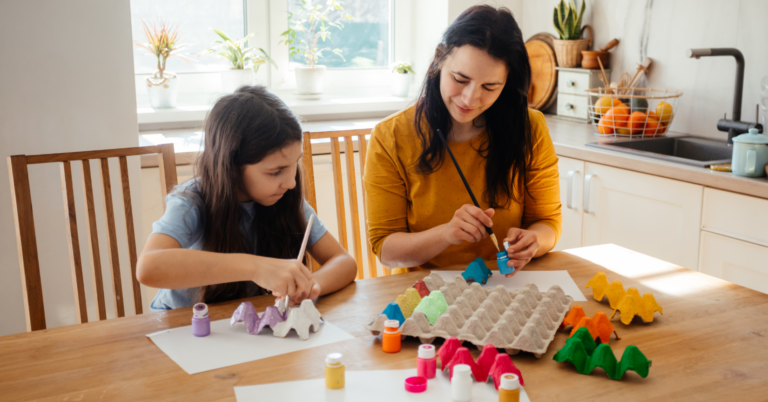Understanding the unique learning style of your child can be a game-changer in their educational journey. If your child is a logical learner, their ability to reason, recognize patterns, and logically analyse problems sets them apart.
Logical learners are often inquisitive, and they thrive when they understand the ‘why’ behind information. They are also keen on problem-solving and can successfully connect pieces of information together.
Now, teaching children with a logical learning style might pose a challenge if you’re not equipped with the right strategies. But don’t worry, because I’ve got you covered.
In this article, I’ll share with you 8 effective teaching techniques that you can use to foster a child with a logical learning style. These methods are both easy to implement and crafted to maximize your child’s unique cognitive abilities.
To make your teaching experience more meaningful and productive, we’ll dive deep into strategies that tap into your child’s strength in logical reasoning and problem-solving. So stay tuned, as we unfold these techniques in the next section.
1. Utilize Puzzles and Problem-Solving Games
Children with a logical learning style have an innate ability to solve problems and decipher patterns. This makes puzzles and problem-solving games an excellent tool in their learning process.
Puzzles stimulate their brain, allowing them to utilize their logical thinking skills. They provide a hands-on experience for your child to explore different solutions and find the one that works best. This process enhances their logical thinking and boosts their confidence in decision making.
Problem-solving games, on the other hand, offer a fun and interactive way to learn. They can range from online games to board games. These games often involve strategies and critical thinking, which are essential for logical learners.
Some examples of problem-solving games that you can introduce to your child include Sudoku, Chess, and Rubik’s cube. You can also explore online platforms that offer a variety of educational games designed for different age groups.
The goal is not just about winning the game, but more importantly, to engage your child’s mind in logical reasoning and critical thinking. Regular practice can significantly enhance these skills and make learning an enjoyable experience for your child.
2. Introduce Cause and Effect Activities
Logical learners have a strong desire to understand how things work. They enjoy investigating the relationships between different elements, especially when it comes to cause and effect.
Activities that demonstrate cause and effect can feed their curiosity and reinforce their understanding of logical sequences. This can be as simple as conducting a science experiment at home or providing toys that demonstrate cause and effect, such as dominoes or marble run sets.
For example, in a science experiment, your child can observe how vinegar reacts with baking soda. This simple activity demonstrates a chemical reaction while also encourages your child to ask questions and explore further.
You can also integrate cause and effect activities into everyday tasks. For instance, while cooking, you can explain how heat changes the properties of ingredients.
This method of teaching will satisfy their curiosity and enhance their ability to think logically and make educated predictions about outcomes. The key here is to make sure these activities are interactive and engaging to keep your child’s interest high.
3. Incorporate Technology in Learning
In this digital age, technology can be a powerful tool in enhancing a child’s logical thinking skills. Many educational apps and online platforms offer interactive learning experiences that engage children in problem-solving and reasoning activities.
One of the benefits of using technology in teaching is that it allows for personalized learning. Children can learn at their own pace, repeat lessons as needed, and choose activities that suit their interests. Furthermore, technology provides instant feedback, which is beneficial for logical learners as they prefer to see the results of their actions immediately.
Coding games are a great way to improve logic and problem-solving skills. They teach children how to break down complex problems into smaller, more manageable tasks, a key skill for logical thinkers.
Incorporating technology into your teaching methods caters to their learning style and prepares them for the digital world.
4. Engage in Group Activities
While logical learners often prefer individual tasks, there’s a lot they can gain from group activities. Participating in group tasks allows them to observe different perspectives and ways of thinking, enhancing their problem-solving capabilities.
Group activities such as brainstorming sessions, group projects, or team games encourage logical learners to express their ideas and listen to others. This collaborative environment can help them understand the importance of teamwork and cooperation, and at the same time, sharpen their critical thinking skills.
Moreover, group activities provide a platform for logical learners to articulate their thoughts and ideas. This practice can improve their communication skills, which is essential in expressing their logical reasoning.
Creating a supportive environment where every member’s input is valued. This way, your child can confidently engage in discussions and contribute their ideas.
5. Use Real-Life Examples
One of the most effective ways to teach children with a logical learning style is to relate the concepts to real-life situations. This allows them to see the practical application of what they are learning and understand its relevance.
Related Stories from Careful Parents
When you’re teaching your child mathematics, you can use examples from daily life like shopping or cooking. When explaining a concept like fractions, you could use a pizza or a pie and divide it into pieces. This visual representation makes the concept more tangible and easier to understand.
Additionally, real-life examples make learning more engaging and relatable. It shows them that what they’re learning is not just confined to books but has real-world applications. This approach can boost their interest in the subject and motivate them to learn more.
Remember, for logical learners, understanding ‘why’ something works the way it does is important. By showing them the practical application of concepts, you’re answering this ‘why’ and enhancing their learning experience.
6. Encourage Questioning
Logical learners have a natural curiosity and a strong desire to understand the world around them. Encouraging them to ask questions is a great way to stimulate their logical thinking.
Whether it’s during a lesson or in everyday life, allow your child to ask questions about what they are learning or observing. This satisfies their curiosity and promotes critical thinking and problem-solving skills.
Teach them that there are no silly questions and that asking is a crucial part of learning. Also, when they come to you with a question, try to guide them towards finding the answer rather than simply providing it. This encourages self-learning and independence.
By promoting a questioning mind, you are helping your child become an active learner who seeks knowledge rather than passively receiving information. This is a trait that will benefit them throughout their learning journey.
7. Provide Clear Instructions and Expectations
Logical learners thrive in structured environments with clear instructions and expectations. They prefer to know exactly what is expected of them and the steps they need to take to achieve it.
When setting a task for your child, be clear and specific about what you want them to do. It’s also beneficial to explain why they are doing it, as logical learners often seek to understand the purpose behind tasks.
If there are multiple steps involved, break down the task into smaller, manageable parts. This helps them understand the process better and keeps them from feeling overwhelmed.
Also, providing a timeline or a deadline can be helpful. It gives them a clear framework within which they need to complete the task and encourages time management skills.
Clarity and structure don’t mean there’s no room for creativity. Encourage your child to come up with their own strategies within the given framework. This will enhance their problem-solving skills while adhering to the set guidelines.
8. Use Visual Organizers
Visual organizers, such as mind maps, flowcharts, or diagrams, can be extremely helpful for logical learners. They provide a visual representation of information, making it easier for these learners to understand and remember concepts.
Mind maps can help in organizing thoughts and ideas, linking related information, and breaking down complex topics into simpler parts. They can be used for brainstorming, planning essays, or studying for tests.
Flowcharts and diagrams are particularly useful when explaining processes or sequences. They visually represent the steps or stages involved in a process, allowing logical learners to understand the flow of information.
When using visual organizers, encourage your child to create their own. This enhances their understanding of the topic and improves their skills in organizing and structuring information.
Visual organizers provide a different perspective on learning and are an effective way to cater to your child’s logical learning style.
Implementing these teaching techniques
Now that you’re equipped with these teaching techniques for children with a logical learning style, the next step is to put them into action.
Each child is unique and what works for one might not work for another. It’s significant to be flexible and adaptable in your approach, tailoring the techniques to suit the individual learner’s needs and abilities.
Start by incorporating one or two techniques into your teaching methods, then gradually add more as you observe their effectiveness. Take note of what works best and adjust your strategies accordingly.
Engage with the child regularly, seeking their feedback on the learning process. This not only gives you valuable insight into their learning experience but also makes them feel valued and involved.
Most importantly, foster a positive and supportive learning environment. Encourage their curiosity, celebrate their successes, and remind them that it’s okay to make mistakes.
Teaching children with a logical learning style can be a rewarding experience. It’s about understanding their unique way of processing information and using that to enhance their learning. With patience, persistence, and the right techniques, you can help them unlock their full potential.
Remember, the goal isn’t just to teach them but to inspire a love for learning that lasts a lifetime.








